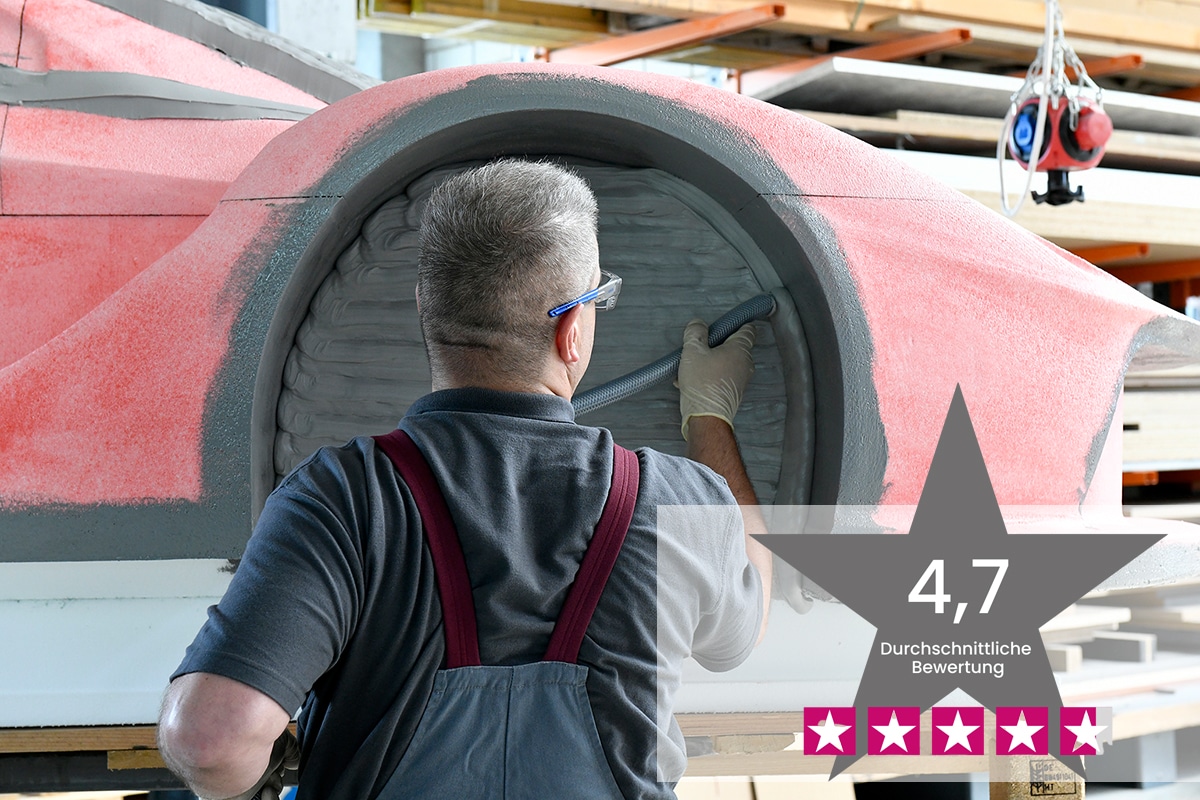“I have to feel happy at the end”
Artist Wanda Pratschke has been using ebalta silicone to mould her sculpture designs for over 40 years.
Automotive, aviation, mechanical engineering: these are the typical industries in which ebalta materials are used. Wanda Pratschke, one of ebalta's longest-standing and most loyal customers, stands out from the crowd: She is a freelance artist and creates bronze sculptures that can be seen at Frankfurt Airport or at Theodor-W.-Adorno-Platz near Goethe University, among other places. She has been buying the silicone she needs to mould her designs from ebalta for over 40 years. "I got the address from my foundry in Altötting back then," recalls the 85 year old artist. "I've been ordering from ebalta ever since. Why should I change? I know the material and have a contact person there in Frank Siemon who won't leave me on my own."
Homage to Lucian Freud
The ebalta product manager also supported the renowned artist with her latest major project: An approximately 1.20 metre high head of the now deceased Queen Elizabeth II of England. No, she is not necessarily a fan of the Queen, explains Wanda Pratschke, who was born in Berlin and has lived and worked in Frankfurt/Main since the early 1960s. Rather, the sculpture is a tribute to the English painter Lucian Freud, who died in 2011, and his portrait of the Queen, which he worked on for months. "Towards the end, the Queen was quite angry that she had to sit still for him for so many hours," says Wanda Pratschke. The resulting small portrait and this special working process inspired her and so she created a design from polystyrene and plaster over the course of nine months. "I found that very interesting, and abstracting a large head like that is also a challenge," she emphasises. She applied narrow strips of polystyrene with plaster layer by layer over a metal frame, later adding plasterboard and liquid plaster. She worked on the design again and again, chipping away pieces and adding new parts – until she was finally satisfied.
Then product manager Frank Siemon came into play. He supported Wanda Pratschke on site in the production of a silicone skin from the plaster model in which the wax model would later be moulded. In the first step, they applied four layers of Silastic® RTV 3481 to the model: First a thin layer with the fast crosslinker 3081 VF and unmodified silicone to reproduce all the fine details. The silicone was then made thicker from layer to layer with the thixo additive and the slower 3081 F crosslinker was also used to prevent it from running off the model. They smoothed the last layer with rinsing water. Before demoulding the model, Frank Siemon made a support mould from the ebacryl lamination system to stabilise the soft silicone.
A buyer for the Queen
After the mould was taken in May 2023, the silicone mould was sent to the foundry in Altötting and the Queen was cast in October. "I really enjoyed this project, especially the energy I was able to put into it," enthuses Wanda Pratschke. That's important to her: "I have to feel happy at the end. The artist has the intention of creating a work. In the end, it's either good or I destroy it." In this case, it is good. She doesn't yet know where the sculpture will find its permanent home. "There are certainly possibilities, I'm not worried that I'll sit on it," she says. Perhaps the Queen will make it to England? Or the branch of an English bank in Frankfurt will buy it.
Who knows? Wanda Pratschke is already turning her attention to new projects. At the moment, she is interested in reliefs. "I enjoy the fact that I can still do this at my age," she says. "The work is often tedious, but I don't have to do it all in one day. I divide it up: I work physically for four to five hours, then I take a break, drink tea and go for a walk." We wish Wanda Pratschke many more good hours full of creative energy with her artistic work – with ebalta silicones, of course.
Further information:
Wanda Pratschke's homepage with a description of her Queen project (in German)

Brushing the polystyrene model with silicone.

The finished cast bronze head of the Queen. © Fotostudio Martin Url, Frankfurt/Main.









